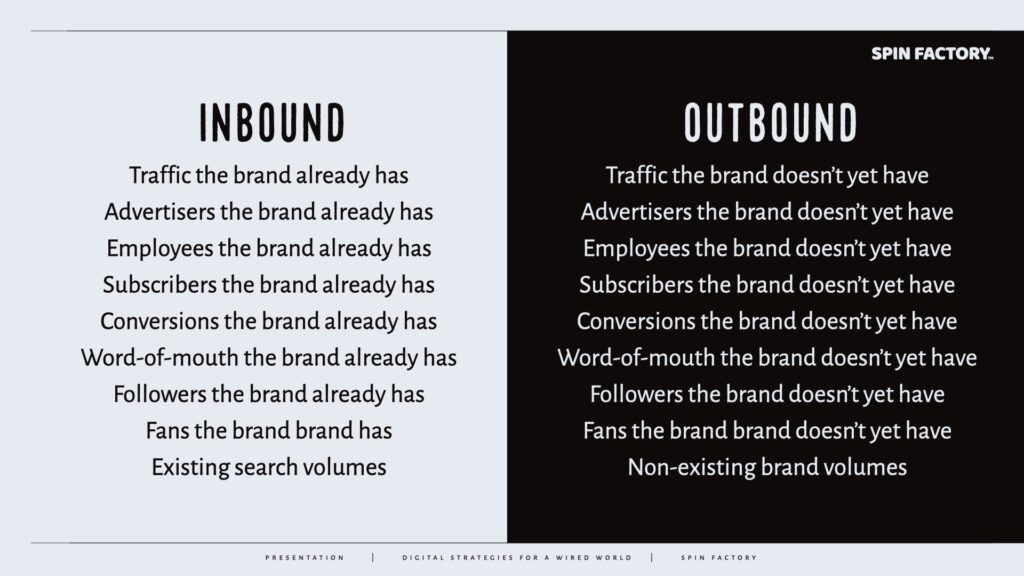Digital PR is all about small numbers.
In digital PR, we speak fondly about forging relationships and patiently building trust, but when it comes down to it, we need to reach a critical mass of people to keep our jobs.
So, we gravitate toward big numbers. Size matters, and the bigger, the better.
At least, that’s what we think.
Here goes:
How We Fear Small Numbers
The internet has profoundly changed the game of digital PR and online marketing, but not when it comes to big numbers. The web has made us more, not less, focused on big data, analytics, and metrics — myself included.
Digital PR = the strategic use of online communication to build brand communities, foster engagement, and manage reputation in the digital space. 1Silfwer, J. (2017, November 20). What is Digital PR? Doctor Spin | The PR Blog. https://doctorspin.net/what-is-digital-pr/
Targets: Inbound web traffic, brand communities, subscribers, fans, followers, influencers, social networks, etc.
In digital PR, we frequently discuss impressive statistics, like a video achieving one hundred million views on YouTube. While this may be true for a hit song performed by a celebrity, our corporate content often fails to gain traction, prompting us to move on to the next project.
The internet has amplified our focus on large-scale data, analytics, and metrics. We feel compelled to reach a critical mass of people to maintain our professional standing.
But when our corporate content goes nowhere, we ignore it and move on to bigger and better endeavours.
The Mission: Strive for Smaller Numbers
By paying attention to smaller numbers, we can find them all around us and use them to our advantage in digital PR.
For example:
For a piece of content to go viral, it needs to convert at a decent level, and the population size must be able to sustain its exposure. But from a mathematical perspective, what matters is cycle time.
For instance, let’s consider numbers that indicate reducing time or loss. To make your message go viral, you should optimise for shorter cycle times — the time between someone being “infected” with an idea and when that person “infects” someone else. Shorter cycle times lead to more viral spread.
Shorter cycle times, more viral spread.
Similarly to cycle times, drop-off rates for websites and funnels should be minimised. Upflowy states, “A good drop-off rate will depend on the industry, product, and other factors. Your drop-off rate should be as low as possible.”
Read also: How To Build a Viral Loop (Using Maths)
Greatness and Impact In Small Numbers
Rather than allowing apprehension to cloud our judgment when faced with small numbers, we should welcome their presence and acknowledge their vital role in digital PR.
In a landscape dominated by the pursuit of ever-increasing numbers, recognizing and leveraging the power of small numbers can set us apart and propel our digital PR efforts to new heights.
But working with both big and small numbers in digital PR has taught me something extraordinary:
We should talk more about small numbers in digital PR. Not less.
By appreciating the impact of these seemingly modest figures, we can uncover new strategies and opportunities for growth and success.
A Beautiful Idea: It Always Starts With One
This focus on smaller numbers suggests that the most powerful number in digital PR is — one. As French poet Victor Hugo (1802−1885) said, “Nothing is more powerful than an idea whose time has come.”
A single person or idea has the potential to change everything. One action can create a butterfly effect, leading to a massive chain of events.
Perhaps our mission as PR professionals is to discover one person, idea, or igniting action that can make all the difference.
As a PR professional, I believe one person or idea can change everything in a world full of big numbers. One action, a lead domino, can ignite a butterfly effect and set off a mighty chain of events.
Read also: Critical Mass in Social Media: How Many Followers Do You Need?
A Contrarian Approach to Results
As digital PR professionals, we are drawn to big numbers — the more views, shares, and likes, the better.
But we should be looking for numbers that we can make smaller.

THANKS FOR READING.
Need PR help? Hire me here.

PR Resource: Suggested Reading
Berger, J. (2016). Contagious: Why Things Catch On. Simon & Schuster.
Watts, D. J. (2011). Everything Is Obvious: How Common Sense Fails Us. Crown Business.
Shirky, C. (2008). Here Comes Everybody: The Power of Organising Without Organisations. Penguin Books.
PR Resource: Inbound vs Outbound
The Inbound Shift
As public relations professionals, we must rethink how we think about publics. Traditionally, many PR departments have argued:
“Why should we waste budgets on ‘already acquired’ audiences?”
The truth is — it’s the other way around.
The inbound shift is a fundamental mindset change in the public relations industry.

Instead of “spamming” non-existing audiences, public relations and marketing can do much more with existing online publics. 2Silfwer, J. (2015, June 11). The Publics in Public Relations. Doctor Spin | The PR Blog. https://doctorspin.net/publics-in-public-relations/
Inbound vs Outbound: The Difference
Inbound vs outbound is the online equivalent of drawing the line between those who know you and those who don’t.
Drawing a line between those who know you and those who don’t know you is nothing new:
If your inbound shift PR strategy is strong, you might no longer need to prioritise your outbound PR strategies since your inbound audience will attract outbound publics!
Learn more: The Inbound Shift PR Strategy
Annotations
| 1 | Silfwer, J. (2017, November 20). What is Digital PR? Doctor Spin | The PR Blog. https://doctorspin.net/what-is-digital-pr/ |
|---|---|
| 2 | Silfwer, J. (2015, June 11). The Publics in Public Relations. Doctor Spin | The PR Blog. https://doctorspin.net/publics-in-public-relations/ |



